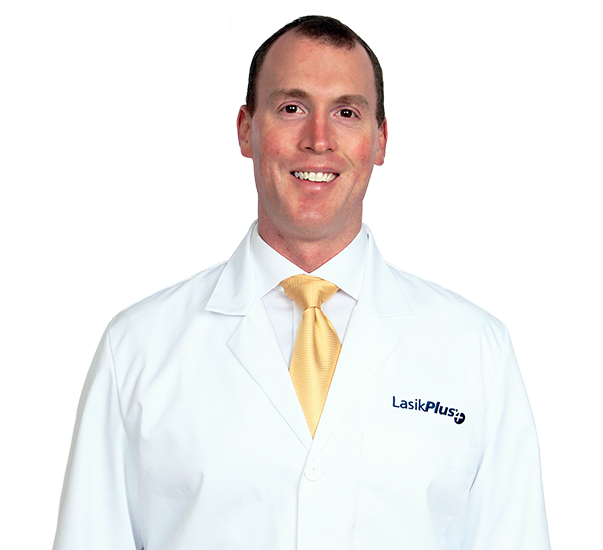-
Summer Savings: Save 20% On LASIK , Find More
*Must mention this promotion and be treated in August of 2024 to qualify. 20% off standard price of Wavelight procedure. Cannot be combined with any other offers.
Family Eye Care Tips & Considerations
Each family’s eye health is unique and determined by heredity, lifestyle and happenstance. However, some eye conditions typically occur during a specific age range. Knowing what to watch for helps you monitor your family members’ eye health. Here are a few of the most common conditions that are experienced by patients throughout their lives and how those conditions are treated.
Early Childhood: Lazy Eye
Lazy eye, or amblyopia, is a condition that develops when a child’s vision begins to favor one eye over the other. It can result from a misaligned or uneven focus. If untreated, the vision in the underutilized eye can diminish, so it’s important that lazy eye be identified and corrected as soon as possible.
Once a full exam provides the doctor with a complete understanding of the health of both eyes, the condition is normally treated by having the child wear a patch over the stronger eye. A newer option is the use of eyedrops that blur the stronger eye’s vision. In both cases, the goal is to strengthen the weaker eye by forcing it to compensate for the lack of vision in the stronger eye. To detect lazy eye and other early eye health issues, vision is often checked at well-baby visits. A first comprehensive eye exam should be done between the ages of three and five.
Childhood to Early Adulthood: Nearsightedness
Nearsightedness, or myopia, usually develops in childhood and progresses until stabilizing in young adulthood. Almost a third of the population of the United States has some degree of nearsightedness, and theories propose that the cause is linked to both heredity and stress to the eyes caused by close-up focusing (e.g., reading and using computer screens).
Nearsightedness is normally diagnosed when the patient describes difficulty clearly seeing objects across a room or at some distance. Eyeglasses are the first resort for most patients. Contact lenses are another option, though they are normally not a viable choice for young children due to the amount of necessary care and maintenance. Once the prescription stabilizes in early adulthood, LASIK or other types of laser vision correction can be done to reshape the cornea itself, improving vision.
Middle to Late Adulthood: Farsightedness
Farsightedness, or hyperopia, is the condition in which distant objects remain clear, but close focus is blurry. Like myopia, hyperopia is easily treated with glasses, contacts or surgery. Unlike nearsightedness, farsightedness often requires treatment when the patient reaches a more advanced age.
Late Adulthood: Cataracts
A cataract is a cloud in the lens of the eye that prevents visual images from getting to the retina. Cataracts most frequently develop due to age, but they can also be caused by an injury or health condition, or even be present at birth.
If a family member experiences or complains of difficulty focusing or experiencing glare in bright light, a cataract may be the cause. When a cataract grows to the point where its resulting poor vision hinders the patient’s quality of life, elective surgery can be done to remove it.
This is a short list of common eye conditions, but many more often arise — everything from conjunctivitis to glaucoma, astigmatism to retinal detachment. Most eye conditions are treatable, but early detection is key. Make sure that all of your family members see your eye care professional for annual checkups and whenever any concerns arise. While certain conditions occur at particular times of life, eye health should be a matter of concern at all times.
YOU MIGHT ALSO LIKE...
VISION CENTERS NEAR ME
Enter your zip code, city, or a doctor name below to find a vision center.
Find out if LASIK is right for you
Congratulations!
Your vision issues can most likely be corrected with a LASIK procedure. Schedule a free consultation today.
Answer 5 simple questions to see if you are a candidate
What is your age group?
Do you wear...
With corrective lenses, do you have...
Have you ever been told that you have astigmatism?
Have you ever been told that you have dry eyes?
Request an Information Kit
Learn about your surgeon, the latest advanced technology, procedures, options and benefits, financing options, and what to expect from your LASIKPlus experience.









